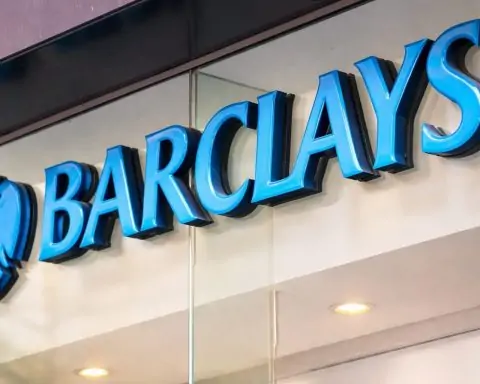Published: Tuesday 25 November 2025
UK savers are waking up to a double shock: reports that Chancellor Rachel Reeves will slash the annual cash ISA allowance from £20,000 to £12,000 in tomorrow’s Autumn Budget, and a frantic scramble among banks to lure customers with higher ISA interest rates before the rules change. [1]
According to multiple briefings overnight, the change will sit at the heart of a tax-heavy Budget designed to close a roughly £22 billion hole in the public finances while nudging households away from cash and into investments in the UK stock market. [2]
Key points at a glance
- Cash ISA allowance set to fall from £20,000 to £12,000 from the next tax year, if Budget leaks are confirmed. [3]
- No cap on stocks & shares ISAs is expected within the overall £20,000 ISA limit – the cut is targeted at cash only. [4]
- Banks and building societies have kicked off a “rate war” on cash ISAs, with a flurry of launches and rate rises ahead of the Budget. [5]
- Reeves’ wider package is thought to include tax threshold freezes, a new “mansion tax” and other wealth-focused measures, as she seeks to balance the books without deep spending cuts. [6]
- MPs, think tanks and industry groups warn the ISA cut may backfire, doing little to boost stock market investment while weakening incentives to save. [7]
What is actually being proposed in Budget 2025?
While the final text of the Budget will only be confirmed when Reeves stands up in the Commons on Wednesday 26 November, several key elements have now been widely reported:
- Annual cash ISA allowance cut to £12,000: The maximum that can be held in cash within an ISA is expected to drop by £8,000. The overall ISA allowance of £20,000 is set to remain, meaning the balance could still be invested in stocks and shares, innovative finance or Lifetime ISAs. [8]
- Aim: push money into UK equities: Treasury sources and briefings to the Financial Times and other outlets say the move is designed to funnel more household wealth into UK-listed companies at a time when London has struggled to attract and retain big-name listings. [9]
- U‑turn on “Brit ISA”: Earlier in the year, ministers flirted with a special “Brit ISA” that would have required savers to allocate a chunk of their portfolio to UK shares. That idea has been shelved after pushback from ISA providers and concerns it would clash with existing consumer protection rules. [10]
- A broader tax-raising Budget: The ISA reform is only one piece of a package thought to total around £30 billion in extra revenue and spending restraint, including a freeze on income tax thresholds, a cap on salary sacrifice, a “mansion tax” on homes worth over £2 million, and a freeze in the personal savings allowance. [11]
Reeves is attempting a tricky balancing act: convincing markets that Labour is serious about fiscal discipline, while persuading voters this is a “fair” Budget that targets wealth rather than work.
Why target cash ISAs?
Cash ISAs have had a renaissance in the high‑rate era. A recent parliamentary Treasury select committee report estimated that UK households now hold around £360 billion in cash ISAs, and that between the 2021–22 and 2023–24 tax years, subscriptions to stocks and shares ISAs fell by roughly 9% while cash ISA inflows more than doubled. [12]
From the Treasury’s perspective, that poses two problems:
- Lost tax revenue – As interest rates rose in 2023–24, the cost of ISA tax relief ballooned, with one industry estimate putting the benefit to savers at more than £2 billion per year. [13]
- Weak support for UK capital markets – Ministers worry that too much money is sitting in low‑yielding deposits while London’s stock market struggles with a thin pipeline of new listings and a steady drip of companies decamping to New York or elsewhere. [14]
By trimming the cash component of the ISA allowance – but leaving the overall £20,000 cap – Reeves hopes to nudge savers towards risk assets without being seen to punish those with more modest savings pots.
Bloomberg reports that the change is part of a wider package of roughly £30 billion in tax increases and spending restraint aimed at stabilising Britain’s finances and meeting Reeves’ self‑imposed fiscal rules. [15]
Banks respond with a cash ISA “rate war”
If the goal was to shift behaviour, it’s already having an effect – though maybe not the one the Treasury had in mind.
With just hours to go before the Budget, banks and building societies have kicked off a mini price war on cash ISAs, racing to attract customers who want to fill up this year’s full £20,000 allowance while they still can. [16]
According to analysis cited in The Times and specialist savings sites:
- Over the past month, 11 of the leading easy‑access and fixed‑rate ISAs have increased their rates, even as broader expectations point to a Bank of England base rate cut from 4% to 3.75% in the coming months. [17]
- App‑based provider Moneybox is topping the easy‑access tables with a rate of around 4.47%, while challenger banks such as Vanquis, UBL, Principality and Charter Savings Bank have also moved aggressively higher. [18]
- Bank of England data suggests around £27–30 billion has flowed into cash ISAs since April, underlining the sector’s renewed popularity in 2025. [19]
It is highly unusual to see savings rates rising into an expected rate‑cutting cycle. Analysts say providers are scrambling for sticky retail funding before the allowance shrinks, and before savers potentially turn to taxable accounts where banks don’t have to share any of the upside with the Treasury.
Will cutting the ISA limit really boost investment?
Here the evidence is far less convincing.
- A cross‑party Treasury select committee concluded last month that lower ISA limits were unlikely to deliver a meaningful boost to stock market investment and risked simply reducing overall saving. [20]
- Research from KPMG, released yesterday, found that 87% of adults with a cash ISA said they would not move into stocks and shares if the allowance were cut. Most said they would leave any excess in ordinary savings accounts or pensions instead. [21]
- Only around one in five young adults surveyed by KPMG said they would be likely to invest in shares if the rules changed, suggesting the policy may not transform investment culture overnight. [22]
Moneyfacts, which tracks savings markets, has warned that trimming the cash ISA allowance could be a “futile attempt” to push risk‑averse savers into investing, noting that many already prefer cash precisely because of stock market volatility and the reassurance of FSCS protection on deposits. [23]
In short: Reeves can change the rules, but she may not be able to change people’s risk appetite. Unless the Budget also tackles financial education, investment costs and confidence in UK plc, there’s a real risk the policy simply reroutes money into taxable easy‑access accounts and short‑term bonds instead.
The politics: a “tax raid” or necessary reset?
Predictably, the reaction has split along party lines.
- Conservative figures, including shadow chancellor Mel Stride, have accused Reeves of staging a “tax raid on hardworking savers”, arguing that people who did the “right thing” by building up buffers are now being penalised to fill Labour’s fiscal gap. [24]
- On the Labour benches, there is nervousness too. The Independent’s live coverage highlights concerns among some MPs that another round of tax rises – on top of earlier welfare U‑turns and OBR downgrades to growth – could test public patience and party unity. [25]
At the same time, economic think tanks have been blunt about the scale of the challenge. With growth stuck around 0.3% and long‑term borrowing costs at their highest in decades, universities and institutes alike have branded the task facing Reeves as not just fiscal, but “moral”: how to repair public services without shattering trust in the tax system. [26]
The ISA cut allows Reeves to signal toughness and “fairness” – the policy is clearly targeted at those capable of saving five‑figure sums each year – while avoiding a headline‑grabbing rise in basic income tax. But it also risks alienating precisely the middle‑income professionals whose votes Labour worked hardest to win in 2024.
Who will feel the ISA cut most?
If the £12,000 cash cap goes ahead, the impact will be very uneven.
1. High‑balance savers
People who routinely use the full £20,000 ISA allowance – often older, mortgage‑free professionals and early retirees – stand to lose the most tax shelter.
- They will either need to accept more investment risk in stocks and shares ISAs,
- Or hold the excess in taxable accounts and potentially pay income tax on interest above the personal savings allowance.
Industry surveys suggest many in this group simply won’t change behaviour – they’ll stick with cash and pay whatever tax arises. [27]
2. Typical households
For most households, the practical impact may be smaller:
- A saver would need to deposit the new full £12,000 cash ISA allowance at ~4% to earn about £480 of interest in a year – still within the personal savings allowance for basic‑rate taxpayers. [28]
- Many savers never come close to using the current £20,000 limit at all.
KPMG estimates around 16% of cash ISA holders don’t expect to hit the allowance anyway, meaning the change is more symbol than substance for them. [29]
3. Banks and building societies
Providers face a mixed picture:
- Short‑term gain: a rush of inflows as savers race to lock in today’s £20,000 allowance and newly‑boosted rates. [30]
- Medium‑term worry: trade bodies have already warned Parliament that cutting the allowance could “destabilise” retail funding models that rely on ISA savers for long‑term deposits. [31]
What can savers do now?
Nothing in this article is personal financial advice, but there are a few practical steps UK savers may want to think about before and after the Budget.
1. Decide whether it’s worth using this year’s full ISA allowance
If you have spare cash and were planning to save anyway, this could be the last tax year to put £20,000 entirely into cash.
- If you won’t get near £12,000, the change may not matter.
- If you regularly max out, topping up now could lock in more tax‑free headroom for future years.
2. Shop around – the rate war is real
Because banks are competing hard ahead of the Budget, top ISA rates are unusually generous for this point in the rate cycle. Easy‑access deals above 4% and fixed‑rate ISAs close to that level are still available, but experts warn these may fade quickly if the Bank of England cuts base rate. [32]
Comparing both ISA and non‑ISA savings is more important than ever: if your interest will sit below the personal savings allowance, a standard savings account with a higher rate might beat an ISA even after the rule change.
3. Think carefully before jumping into stocks
Reeves clearly wants more households to invest in UK companies – but equities carry risk.
- A stocks and shares ISA can be powerful for long‑term goals (10+ years),
- But money you might need in the next few years is usually better kept in cash.
If you’re unsure, independent financial advice can help you weigh up volatility, risk tolerance and tax.
4. Don’t panic before the details are confirmed
All of today’s coverage is based on pre‑Budget briefings and leaks. Until the Chancellor finishes her speech tomorrow and the Finance Bill is published, the exact rules, timings and transitional arrangements could still shift at the margins.
What happens next?
Tomorrow’s Autumn Budget will confirm:
- The precise wording and start date of any ISA reform;
- Whether there are transitional protections for existing cash ISA balances;
- How the ISA change meshes with other measures such as mansion tax, tax threshold freezes and possible changes to pensions and salary sacrifice.
Given the fierce debate already raging – from City lobby groups to TV money experts – the cash ISA cut is likely to be one of the most politically explosive elements of Budget 2025, even if the headline revenue number is relatively small.
For now, savers have roughly 24 hours of clarity: the current £20,000 ISA allowance is still in force, banks are falling over themselves to offer competitive rates, and the window to take advantage of both may not stay open for long.
References
1. www.ft.com, 2. www.independent.co.uk, 3. www.ft.com, 4. www.ft.com, 5. www.thetimes.com, 6. www.independent.co.uk, 7. www.theguardian.com, 8. www.ft.com, 9. www.ft.com, 10. www.ft.com, 11. www.independent.co.uk, 12. www.independent.co.uk, 13. publications.parliament.uk, 14. www.ft.com, 15. www.bloomberg.com, 16. www.thetimes.com, 17. www.thetimes.com, 18. www.thetimes.com, 19. moneyfactscompare.co.uk, 20. publications.parliament.uk, 21. kpmg.com, 22. kpmg.com, 23. moneyfactscompare.co.uk, 24. www.independent.co.uk, 25. www.independent.co.uk, 26. www.bradford.ac.uk, 27. kpmg.com, 28. moneyfactscompare.co.uk, 29. kpmg.com, 30. www.thetimes.com, 31. publications.parliament.uk, 32. www.thetimes.com










